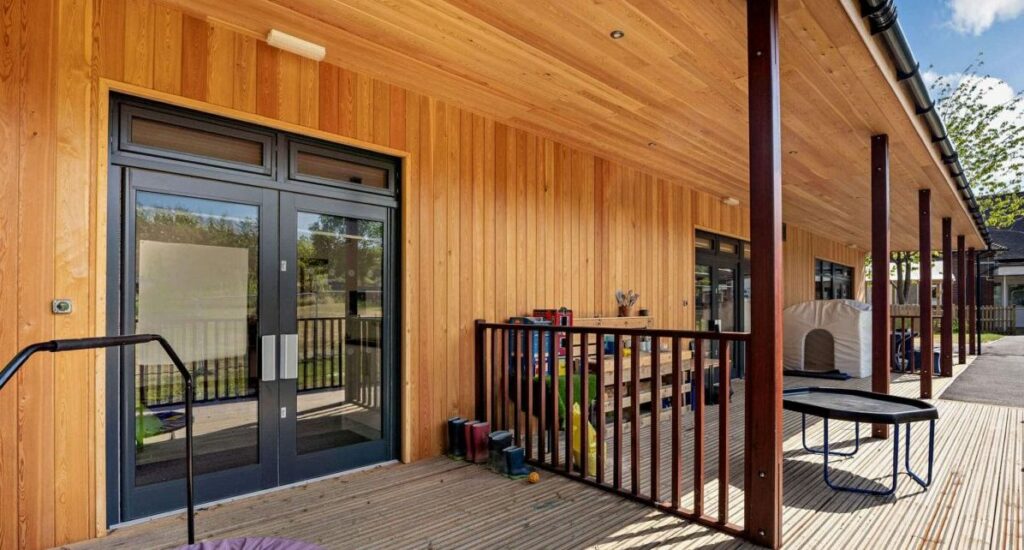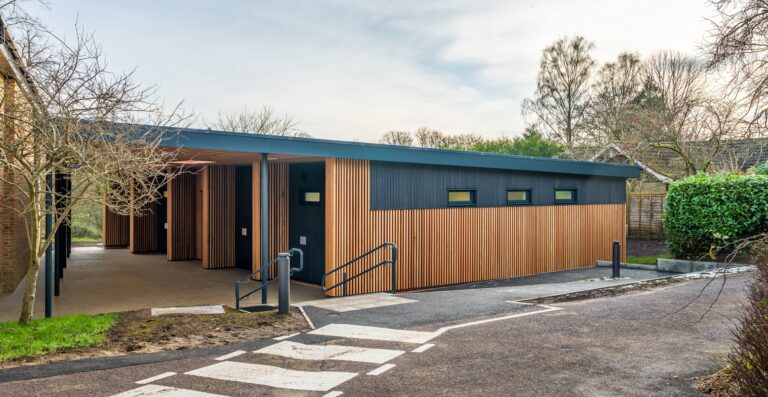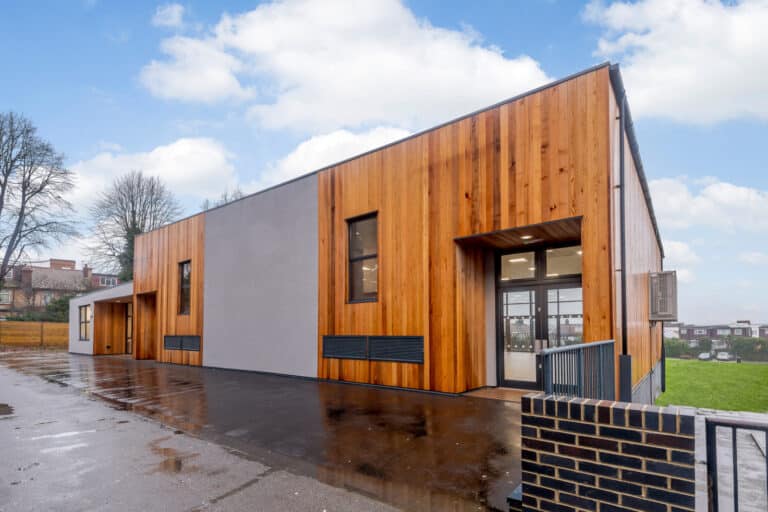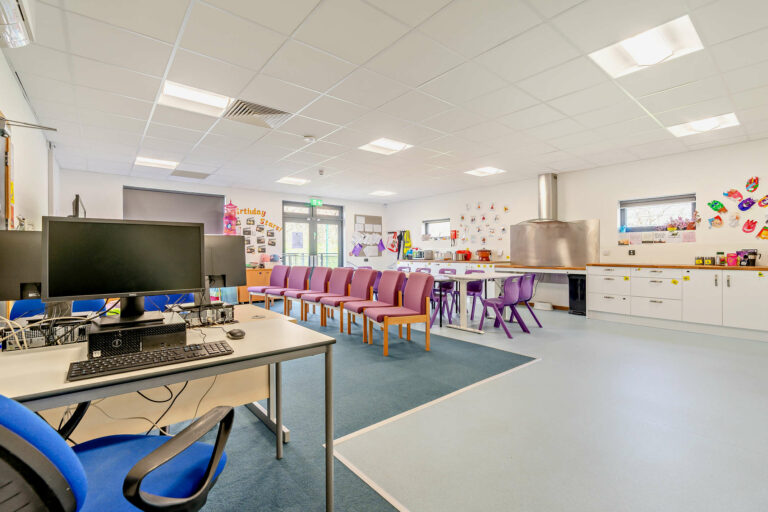For students with Social, Emotional, and Mental Health (SEMH) needs, the right environment can make a world of difference. In an ideal setting, buildings are a key part of the therapeutic process, shaping behaviour, supporting emotional regulation, and helping students feel safe, included, and respected.
At TG Escapes, we’ve seen firsthand how sustainable, biophilic design can positively influence learners with SEMH requirements. And we’re not alone. A growing body of evidence highlights the impact of natural materials, soft acoustics, access to daylight, and strong indoor-outdoor connections on behaviour and wellbeing.
Why environment matters for SEMH provision
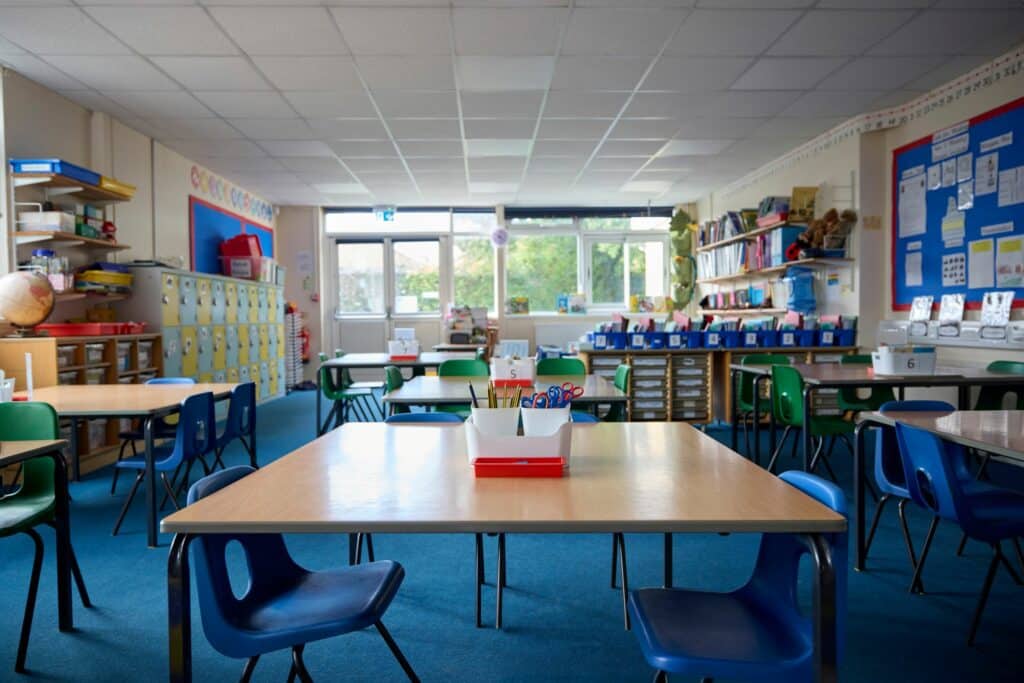
SEMH learners often face significant barriers to engagement, including high anxiety, low self-esteem, and difficulty in managing behaviour. Traditional school buildings, particularly those that are cramped, harshly lit, or noisy, can amplify these challenges.
A 2018 report from the Department for Education notes that “children and young people with SEMH needs often require carefully managed and structured environments to enable them to engage effectively in learning” (DfE, 2018). The National Autistic Society and other SEND charities echo the importance of low-stress, calming spaces tailored to individual needs.
For many SEMH learners, sensory sensitivity is a significant factor in their learning experience. Learners with SEMH often experience heightened responses to noise, light, and crowding, making quiet, ordered, and predictable environments essential for their well-being.
This is where a different approach to design becomes crucial. Spaces for SEMH need to be calm, flexible, and nurturing. They should provide a sense of structure and safety without feeling institutional. Just as importantly, they should offer a degree of separation from the rest of the school, allowing students to find their rhythm, albeit without feeling excluded.
The role of biophilic design in SEMH settings
Biophilic design, the practice of connecting people with nature through the built environment, has particular relevance for SEMH provision. It has been shown to reduce stress, improve mood, and support cognitive functioning.
According to the University of Salford’s HEAD Project, classroom design can affect learning outcomes by up to 16%, and key factors include natural light, air quality, colour, and layout. At its core, biophilic design acknowledges a simple yet powerful idea: humans have an innate need to connect with nature. This connection has been shown to have a measurable impact on mental health and emotional well-being. In educational contexts, especially those supporting vulnerable or neurodiverse learners, this is not just beneficial but potentially transformative.
What does biophilic design look like?

Biophilic design goes beyond simply adding plants to a space. It’s a structured approach to creating buildings that foster a deeper connection with the natural world, supporting wellbeing, concentration, and emotional regulation in the process.
Key elements of biophilic design include:
- Natural Light: Maximising daylight helps regulate mood, sleep patterns, and energy levels. Biophilic buildings are typically designed with large, strategically placed windows and glazed doors to flood interior spaces with natural light while maintaining a warm, comfortable environment.
- Views of Nature: Being able to see greenery, trees, or sky, even from inside, has been shown to reduce anxiety and promote focus. Biophilic buildings often take advantage of outdoor views and carefully considered window placements.
- Natural Materials: The use of exposed timber finishes provides warmth and texture, which can be particularly grounding for SEMH students. Biophilic buildings often feature sustainably sourced timber and other natural materials.
- Indoor-Outdoor Flow: Connection to outdoor space is critical for SEMH learners who may need regular breaks or movement opportunities to self-regulate. Biophilic design can incorporate covered verandas, wide doors and direct outdoor access, with many of our projects incorporating designed outdoor spaces.
- Acoustic Comfort: Natural materials like timber help absorb sound, creating quieter spaces that reduce sensory overload. This is particularly important for students with heightened sensitivity to noise.
- Ventilation and Air Quality: Good airflow and temperature regulation contribute to physical comfort and concentration. Biophilic design considers natural ventilation systems, breathable materials, and the option for mechanical ventilation to maintain a healthy indoor environment.
Our SEMH Buildings: Mountfield Heath School
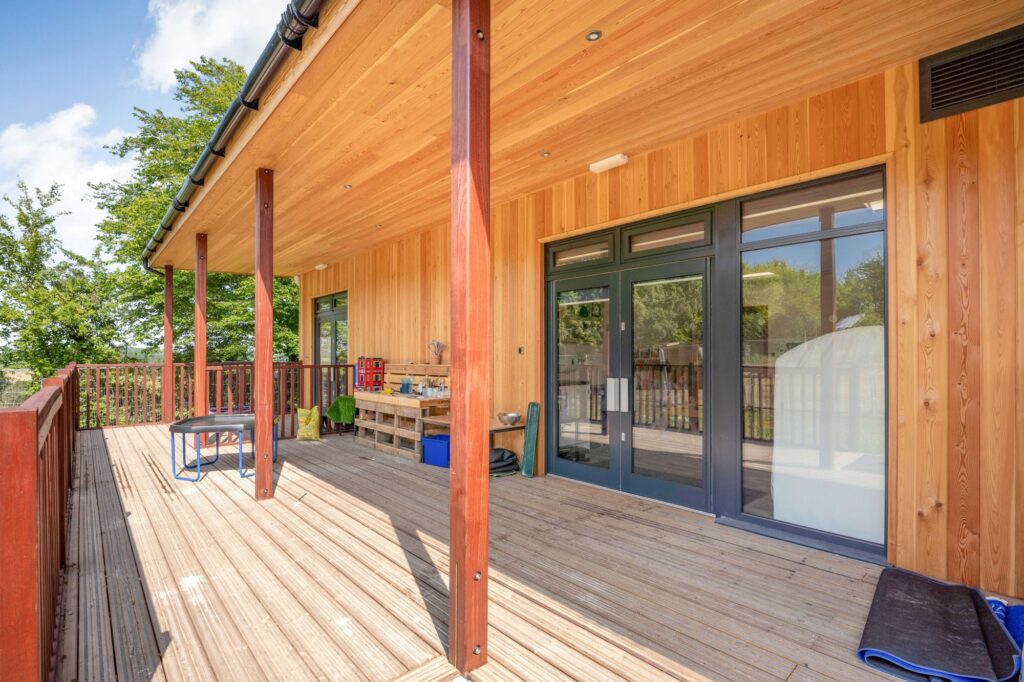
A powerful example of this approach in action is Mountfield Heath School in East Sussex, part of the Witherslack Group. The school provides specialist support for young people with SEMH, focusing on ASC (Autism Spectrum Conditions).
We worked with Mountfield Heath to design and construct a standalone teaching space specifically tailored to their students’ needs including:
- A large classroom, flooded with natural light.
- A calm breakout space for students to decompress when needed.
- A dedicated office and hygiene room, supporting both care and administration.
Headteacher Lyndsey Jefferies said, “All the children love it and want to move into ‘The Holt’ (an Otters house) which is what we’ve called it… What works very well are the verandas. Having the decking coming straight off the front, that indoor/outdoor space works very well with our children.”
Read the full case study here.
Building better futures through thoughtful design
For young people with SEMH needs, the learning environment isn’t just a backdrop to education; it’s an active part of the support they receive. A well-designed space can offer calm when emotions run high, privacy when students need to regulate, and connection when they’re ready to engage.
Biophilic design provides a powerful framework for creating these kinds of spaces. By embracing natural light and materials, we can make environments that support wellbeing, inclusion, and progress.
At TG Escapes, we believe every student deserves to feel safe, respected, and inspired by the space they learn in. Our modular, eco-friendly buildings are designed with this principle at their heart, and we’re proud to have supported schools like Mountfield Heath in creating settings where SEMH learners can truly thrive.
Want to explore spaces for SEMH provision?
If you’re planning new or expanded SEMH facilities and want to explore how biophilic design can enhance learning and wellbeing, our team is here to help. TG Escapes provides free design consultations to help you create a space that’s tailored to the needs of your learners.
Speak to us to get started.

